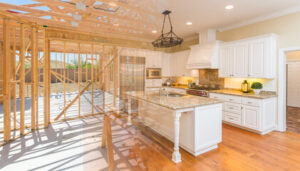Kitchen Remodel San Jose can completely transform the heart of your home. Modern kitchens are no longer just for cooking; they serve as gathering spaces, workstations, and creative hubs.

Homeowners increasingly view kitchen upgrades as essential investments in both functionality and design. A well-executed remodel enhances daily living and adds value to the property.
The growing demand for open-concept kitchens reflects a shift toward more social and connected living spaces. Removing walls to create seamless transitions between the kitchen and living areas improves flow and accessibility. Open layouts allow for better interaction with family and guests while cooking. This design also maximizes natural light and creates a more spacious feel.
Storage solutions have become a major focus in kitchen remodeling projects. Homeowners seek innovative ways to reduce clutter and maximize cabinet space. Pull-out shelves, hidden compartments, and vertical storage options help make the most of available space. Smart storage solutions keep essentials organized and accessible without compromising style.
Materials and finishes play a key role in defining the overall look of a remodeled kitchen. Homeowners are shifting toward natural textures and sustainable materials. Stone countertops, wood accents, and matte finishes create a warm and inviting atmosphere. These choices reflect a growing preference for timeless and eco-friendly designs.
Lighting has become a crucial element in modern kitchen design. Layered lighting, combining task, ambient, and accent lighting, enhances both function and aesthetics. Under-cabinet lighting improves visibility for food preparation, while pendant lights create focal points over islands. Adjustable lighting allows homeowners to set different moods for cooking, dining, and entertaining.
Smart technology is reshaping kitchen functionality. Homeowners are incorporating voice-activated assistants, smart appliances, and automated lighting systems. These features provide convenience and efficiency, making meal preparation easier and more enjoyable. Technology also enhances energy efficiency and helps reduce utility costs.
Color schemes in kitchen remodels are evolving toward more sophisticated palettes. Neutral tones like beige, gray, and white remain popular for their versatility. However, bold accents in deep blues, greens, and even black are emerging as statement choices. These colors add depth and personality while maintaining a refined look.
The choice of cabinetry significantly influences the overall feel of a remodeled kitchen. Flat-panel cabinets with minimalist handles create a sleek, modern aesthetic. Glass-front cabinets add visual interest and allow homeowners to display stylish dishware. Soft-close mechanisms and handle-free designs enhance functionality and maintain a clean appearance.
Countertops are a focal point in kitchen remodels. Homeowners are opting for durable, easy-to-maintain materials with distinctive patterns and textures. Waterfall countertops, where the material extends over the edges, create a dramatic effect. Contrast between countertop and cabinetry colors adds visual depth and modern appeal.
Backsplashes have become a major design feature in modern kitchens. Large-format tiles, textured patterns, and reflective materials add character to the space. Full-height backsplashes that extend to the ceiling create a striking visual impact. Coordinating backsplash colors with countertop and cabinet finishes enhances overall harmony.
Kitchen islands have evolved from functional surfaces to multi-purpose hubs. Large islands with integrated storage, seating, and prep areas are in high demand. Waterfall edges, built-in appliances, and charging stations add to their versatility. Islands also serve as gathering spots for casual meals and socializing.
Appliance selection is a critical aspect of kitchen remodeling. Homeowners seek energy-efficient models with smart features and modern finishes. Built-in appliances that blend seamlessly with cabinetry create a cohesive look. Professional-grade appliances enhance cooking performance and elevate the kitchen’s overall functionality.
Flooring choices have shifted toward durable and low-maintenance materials. Hardwood, engineered wood, and large-format tiles are popular for their longevity and visual appeal. Heated flooring adds comfort and luxury, especially in colder climates. Coordinating floor color with cabinetry and countertop tones creates a unified design.
Ventilation is often overlooked but plays a vital role in a functional kitchen. Range hoods with powerful extraction systems improve air quality and eliminate odors. Hidden or integrated hoods maintain a streamlined look without sacrificing performance. Proper ventilation protects kitchen surfaces and extends the lifespan of appliances.
Sustainability has become a key consideration in kitchen remodeling. Homeowners are choosing recycled materials, low-VOC finishes, and energy-efficient appliances. Water-saving faucets and smart dishwashers reduce environmental impact without compromising performance. This shift reflects a growing commitment to eco-friendly living.
Personalization is a defining trend in modern kitchen design. Homeowners seek unique details that reflect their personality and lifestyle. Custom cabinetry, statement lighting fixtures, and artistic backsplashes add character. Mixing textures and finishes creates a curated, layered look that feels both modern and timeless.
Seating arrangements have become more integrated into kitchen layouts. Banquettes, bar stools, and built-in benches create casual dining spots. Comfortable seating encourages social interaction and makes the kitchen more inviting. Flexible seating options adapt to different needs, from family meals to entertaining guests.
Open shelving has gained popularity for its practicality and aesthetic appeal. Displaying dishware, cookbooks, and decorative pieces adds warmth and personality. Floating shelves in natural wood or metal finishes create a modern, airy feel. Mixing open shelving with closed cabinets balances style and functionality.
Accent walls and ceiling treatments are emerging as focal points in kitchen remodels. Textured wallpapers, exposed beams, and coffered ceilings add depth and interest. Bold color choices or metallic finishes create contrast and highlight architectural details. These design elements elevate the overall visual impact of the space.
The integration of dining and cooking spaces reflects a shift toward more informal lifestyles. Eat-in kitchens with large islands or extended countertops provide flexibility. Combining prep and dining areas encourages interaction and simplifies meal service. This design approach enhances both convenience and social connection.
Homeowners are increasingly prioritizing ergonomic design in kitchen remodels. Adjustable countertops, pull-down shelving, and soft-close drawers improve accessibility. Thoughtful placement of appliances and storage minimizes physical strain. This focus on comfort and efficiency enhances the overall kitchen experience.
Kitchen remodeling projects often involve reconfiguring layouts to improve workflow. The work triangle, which optimizes the distance between sink, stove, and refrigerator, remains a guiding principle. Additional prep zones and secondary sinks enhance efficiency for multi-person cooking. Streamlined layouts reduce traffic flow and create a more functional space.
The use of mixed materials and textures defines modern kitchen aesthetics. Combining matte and gloss finishes, wood and metal accents, and smooth and textured surfaces creates contrast. This layered approach adds depth and visual interest without overwhelming the space. Coordinated color palettes maintain balance and cohesion.
Artwork and decorative pieces have found a place in modern kitchen design. Framed prints, sculptures, and decorative bowls add personality and warmth. Incorporating plants and greenery enhances natural elements and softens hard surfaces. Thoughtfully chosen décor creates a lived-in feel while maintaining a polished look.
Homeowners are increasingly considering long-term adaptability in their kitchen designs. Features that accommodate changing needs, such as adjustable shelving and modular furniture, provide flexibility. Aging-in-place considerations, like lower countertops and easy-access storage, enhance long-term usability. This forward-thinking approach ensures the kitchen remains functional for years to come.
The combination of modern design and practical functionality defines successful kitchen remodels. Homeowners seek spaces that balance efficiency with style. Skilled contractors understand how to merge aesthetics with performance to create kitchens that meet diverse needs. A well-executed remodel transforms the kitchen into a true centerpiece of the home.

